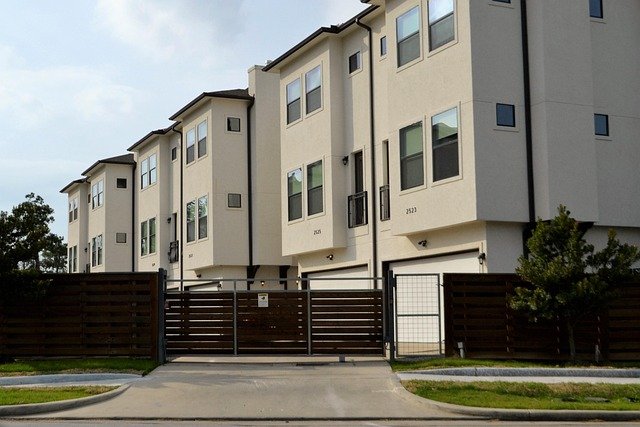Microapartments: The Next Big Thing in Urban Real Estate
In the heart of bustling metropolises, a silent revolution is reshaping the real estate landscape. Microapartments, typically ranging from 150 to 400 square feet, are emerging as a viable solution to urban housing shortages and skyrocketing rents. These compact living spaces are not just a trend, but a reflection of changing lifestyles, economic realities, and a shift in what modern city dwellers prioritize. As urban populations continue to grow and housing affordability becomes increasingly challenging, microapartments are poised to play a significant role in the future of real estate markets worldwide.

Driving Forces Behind the Microapartment Boom
Several factors contribute to the increasing popularity of microapartments. Urbanization continues to accelerate, with the United Nations projecting that 68% of the world’s population will live in urban areas by 2050. This influx of people into cities has led to housing shortages and soaring property prices. Microapartments offer a solution by maximizing the use of limited urban space and providing more affordable housing options.
Moreover, changing demographics play a crucial role. Millennials and Gen Z, who often prioritize experiences over possessions, are more willing to trade space for prime locations. Single-person households are on the rise, further fueling demand for smaller living spaces. The gig economy and remote work trends have also reduced the need for larger homes, as people spend less time in their apartments and more time in shared workspaces or cafes.
Design Innovations: Making the Most of Limited Space
The success of microapartments hinges on innovative design solutions that maximize functionality in minimal square footage. Architects and interior designers are pushing the boundaries of spatial efficiency, creating transformable spaces that serve multiple purposes. Murphy beds that fold into walls, convertible furniture, and sliding partitions are just a few examples of the ingenious solutions being employed.
Smart home technology is also playing a crucial role in enhancing the livability of microapartments. Voice-activated systems can control lighting, temperature, and entertainment, reducing the need for physical switches and remotes. Built-in speakers and projectors eliminate the need for bulky entertainment centers. These technological integrations not only save space but also add a layer of convenience and modernity that appeals to tech-savvy residents.
Economic Implications for Real Estate Investors
From an investment perspective, microapartments present an intriguing opportunity. While the per-unit cost may be lower, the potential for higher returns per square foot is significant. In prime urban locations, developers can fit more units into a building, potentially increasing overall rental income. Additionally, the lower price point of microapartments can attract a broader range of tenants, potentially reducing vacancy rates.
However, investors should be aware of potential challenges. Zoning laws in some cities may restrict the development of such small units. There’s also the question of long-term demand – while current trends favor microapartments, it’s crucial to consider how housing preferences might evolve in the coming decades. Additionally, the higher turnover rate associated with smaller units could lead to increased maintenance and management costs.
The Impact on Urban Planning and Development
The proliferation of microapartments is not just changing the real estate market; it’s reshaping urban landscapes. City planners are rethinking zoning laws and building codes to accommodate these smaller living spaces. Some cities are even incentivizing the development of microapartments as part of affordable housing initiatives.
This shift towards smaller living spaces is also influencing the development of surrounding neighborhoods. With less private space, residents of microapartments tend to use public spaces more frequently. This has led to increased demand for parks, community centers, and shared workspaces in urban areas. Retail and service businesses are also adapting, with a rise in compact grocery stores, laundromats, and storage facilities catering to the needs of microapartment dwellers.
Challenges and Considerations
While microapartments offer numerous benefits, they’re not without challenges. Critics argue that they could lead to overcrowding and potentially compromise quality of life. There are concerns about the psychological effects of living in such small spaces, particularly in the long term. Additionally, families or individuals who work from home may find microapartments impractical.
From a regulatory standpoint, many cities are grappling with how to classify and regulate these units. There’s a delicate balance between encouraging affordable housing options and ensuring adequate living standards. Some cities have implemented minimum size requirements for apartments, which could potentially hinder the development of microapartments.
The Future of Microapartments in Real Estate
As urban populations continue to grow and housing affordability remains a pressing issue, microapartments are likely to become an increasingly important segment of the real estate market. Their success will depend on continued innovation in design and technology, as well as adaptations in urban planning and regulations.
The COVID-19 pandemic has added an interesting dimension to the microapartment trend. While it initially raised questions about the viability of small living spaces, it has also accelerated the adoption of remote work, potentially making city-center living more attractive for those who only need to commute occasionally.
In conclusion, microapartments represent a significant shift in urban living and real estate development. They offer a solution to housing shortages and affordability issues while aligning with changing lifestyle preferences. For real estate professionals, investors, and urban planners, understanding and adapting to this trend will be crucial in navigating the evolving landscape of urban real estate.





